Top 10 Festivals in IndiaIndia is a multicultural and religiously diverse nation. The languages, dialects, and cultural customs of each Indian state are unique in their own way. In India, several communities and religious organizations celebrate a number of different festivals. Some holidays are associated with the state and local communities, while others are observed in accordance with religious beliefs. A fascinating mythical narrative is connected to each of India's holy holidays. These tales are handed down from the previous generation to the next in order for the tradition to be continued by the next generations and for the importance of commemorating these festivals to be understood. In India, every holiday is joyfully observed with a medley of decorations, dancing, music, lights, and delectable cuisine. In India, every significant holiday is lavishly observed. The streets will be packed with revelers dancing, singing, and partying during some of the festivals. Due to the fervor and excitement with which we celebrate all significant festivals in India, one of the key reasons why the song "Diversity, thy name is India" is so well-known. Every event is greeted in India with raucous celebrations and a blending of cultures, whether it is ringing bells at Christmas or lighting the halls with diyas for Diwali. Because they are enthusiastically observed throughout the nation, India's top 10 festivals do experience a unanimity of celebration. Read on to find out about the well-known Indian festivals we're referring. 1. DiwaliAmong the Sikh, Jain, and Hindu faiths, Diwali is among the most important religious celebrations in India. In accordance with the Hindu calendar, Diwali is celebrated during the month of Kartik ( October or November). The Indian people light up their homes during Diwali, the festival of lights, every year to honor and welcome Goddess Laxmi (Goddess of Wealth). The veneration of Goddess Laxmi is one of the principal Diwali customs. 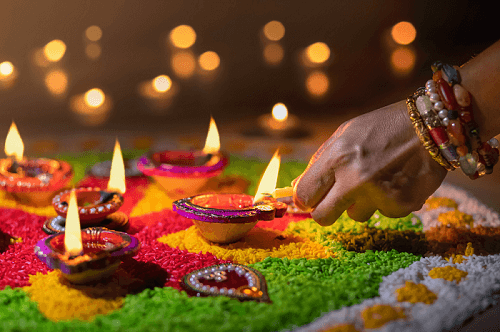
As Lord Rama returned to his kingdom of Ayodhya on the occasion of Diwali with his spouse Sita and brother Lakshman after spending 14 years in exile, Diwali is a significant celebration in India. After a drawn-out conflict in which he destroyed the evil king Ravana, Lord Rama returned home. A further well-known myth is that during the Dvapara Yuga, Krishna, a Vishnu incarnation, defeated the demonic Narakasura, who had been the wicked ruler of Pragjyotishapura, close to modern-day Assam, and freed 16000 captive ladies. People celebrated Diwali as a representation of the triumph of good over evil with Lord Krishna's victory over Narakasura. The day before Diwali is dedicated to celebrating Naraka Chaturdasi, the day on which Krishna killed Narakasura. Hindu community members clean, have painted, and complete all necessary modifications to their homes each year just before Diwali. People tastefully adorn their homes for Diwali with candles and diyas. Beautifully colored Rangolis are also made at the entrance to welcome Goddess Laxmi. People dress up in designer clothes and provide gifts to one another. People enjoy fireworks to commemorate Diwali on the day itself. In preparation for this celebration, some of the best sweet and savoury Indian delicacies are made. Additionally, many pay visits to their friends and family members to wish them well and share presents and treats. According to a scholar of Jainism and Nivethan, Diwali is observed by Jain people as "Mahavira Nirvana Divas," which commemorates Mahavira's corporeal passing and ultimate nirvana. Similar customs to the Hindu festival of Diwali, such as lamp lighting and praying to Lakshmi, are observed during the Jain Diwali that is observed in several regions of India. According to Jain legend, this custom of lighting lamps initially started on the occasion of Mahavira's nirvana in 527 BCE, when 18 monarchs who had assembled for Mahavira's last lectures made a decree that lamps be burned in commemoration of the "great light, Mahavira." 2. HoliIn celebration of the triumph of good over evil, people daub wet and dry colors over each other's faces in the streets during Holi. One of the top 10 holidays in India, Holi is celebrated with extreme zeal and fervor by attending parties, dancing, tossing colored powder and water balloons, and of course, drinking lassi! Holi is an old Hindu custom as well as one of Hinduism's most celebrated celebrations. 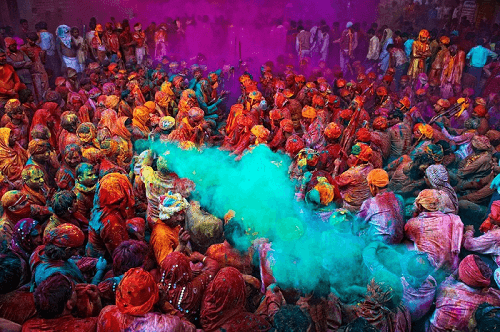
It honors Radha Krishna's eternal and divine love. The day also celebrates Lord Vishnu's victory over Hiranyakashipu in his role as Narasimha Narayana, signifying the victory of good over evil. It began and is primarily celebrated on the Indian subcontinent, but has expanded to other areas of Asia and the Western world via the Indian diaspora. Holi is a celebratory day to meet new people, play and laugh, forgive and forget, mend broken relationships, and celebrate the end of winter, the beginning of spring, and the flowering of love. The ceremony also serves as a prayer for a prosperous spring harvest. It starts on the evening of the Purnima, or Full Moon Day, which comes in the Hindu calendar month of Phalguna, that eventually falls in the middle of March as in the Gregorian calendar. It lasts all day and all night. It goes on for a day and a night. Holika Dahan or Choti Holi is the name given to the first evening, and Holi, Rangwali Holi, Dol Purnima, Dhulandi, Ukuli, Manjal Kuli, Yaosang, Shigmo, Phagwah, or Jajiri is the name given to the second day. Also known as the Festival of Colors, the Festival of Spring, and Love, Holi is a springtime celebration. The night before Holi, people assemble for a Holika Dahan, a religious ceremony in which they pray for the destruction of their inner evil in a manner similar to how Holika, the sister of demon king Hiranyakashipu, perished in the flames. Rangwali Holi (Dhuleti), which is celebrated the next morning, is marked by individuals dousing one another with color. During Holi, it is considered a fair game to use water cannons and water-filled balloons to play and paint each other. In addition to singing and dancing, groups frequently travel with drums as well as other musical instruments. 3. DussheraAn important Hindu festival known as Vijayadashami, also known as Dussehra, Dashain, or Dasara, is celebrated annually at the end of Navaratri. It is observed on the 10th day of Ashvin, and the seventh month of the Hindu Luni-Solar Calender, which corresponds to September and October in the Gregorian calendar. The Dussehra festival is one of the most well-known occasions in the states of India. 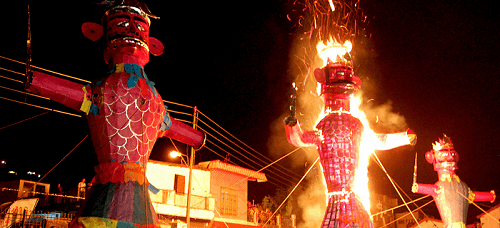
This festival is commemorated across India among the Hindu people. The Dussehra celebration honors Lord Rama's victory over the evil king Ravana. Another interpretation is that it represents the triumph of virtue over evil. Before this major celebration, Ram Leela is performed throughout northern India for nine days straight. The legendary tale connected to this event is performed at the theatre in Ram Leela by regional performers. People gather to see this nine-day theatrical production, and Ram Leela is performed on both a large and local scale in many villages. The ceremony also marks the beginning of the 20-day countdown towards Diwali, the important festival of light that follows Dussehra. On the last day, crowds assemble on expansive fields where enormous idols of the demon king Ravana, his brother Kumbhakaran, and his son Meghnad are lit on fire and then set ablaze. While people congregate to see the Ravana burn, there are also street food vendors and other enjoyable activities. Visitors travel to this location to take in and observe this ritual with their families. Dussehra is observed in parts of South India with grand parades that include elephants decked up in decorations and guards on horseback to carry the statue of Goddess Durga through the streets. In South India, Dussehra is observed in a number of ways, from worshipping Durga to lighting up important forts like Mysore and temples to exhibiting vibrant figurines called golus. The celebration, known as Mahanavami, had historical significance during the Vijayanagara Empire's reign in the fourteenth century. The festival was characterized by the Italian explorer Niccol de' Conti as a magnificent religious and military celebration with royal patronage because of its intensity and significance. 4. NavratriOne of the main Indian festivals is Navratri also known as Durga Pooja, which is celebrated mostly in the country's north and east. Every year, the Hindu goddess Durga is honored at the Navaratri festival. It lasts for nine nights (and 10 days). It is honored for various causes, observed, and celebrated in various ways in various parts of the aforementioned Hindu-Indian cultural realm. 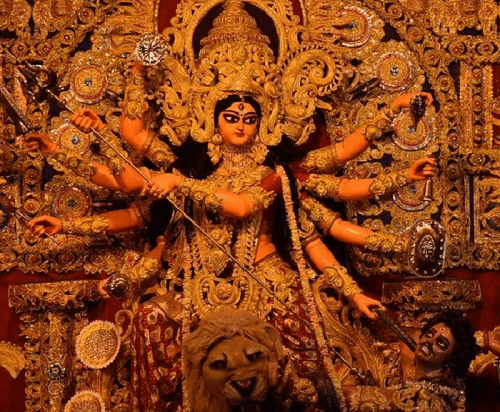
There are four Navaratris that occur during different seasons. In reality, it is Sharada Navaratri, an autumn celebration that takes place after the monsoon season. The festival is commemorated during the Hindu month of Ashvin's bright half, which often falls between the months of September & October in the Gregorian calendar. This nine-day event is known as Navratri in the northern region of India. This festival is observed as Durga Pooja throughout the state of West Bengal. This festival lasts for nine days, with the tenth day?Vijay Dashmi?being the culmination of the celebration. This festival honors Goddess Durga for nine days. It commemorates Goddess Durga's victory against the demonic Mahishasur, who aimed to start a battle against the Gods. Throughout the duration of the nine-day celebration, the Goddess Durga is venerated in nine distinct avatars. One of the biggest holy and divine festivals celebrated in India is Navratri or Durga Pooja. During Navratri, fasting is followed for seven or eight days, with the eighth and ninth day marking the end of the fast. Although in West Bengal, this same festivities take place on a massive scale in Pandals (great tents), where guests congregate every night for nine straight nights to sing, dance, as well as eat delectable sweets and savoury foods. The state of Gujarat is among those that observe Navratri in a unique way. For nine nights straight, large crowds of people dress in traditional Gujarati attire congregate to conduct the customary and traditional Garbha dance to Goddess Durga's devotional songs. These celebrations often last all night because people are so excited about them. 5. Krishna JanmashtamiAn annual Hindu celebration called Krishna Janmashtami, sometimes called Krishnastami, Janmashtami, or Gokulashtami, honors the birth of Krishna, the 8th avatar of Vishnu. Its literal translation is "Occasion of the birth or arrival of Krishna." As per the Hindu lunisolar calendar, it is celebrated on the 'Ashtami' (eighth tithi) of the 'Krishna Paksha' (dark fortnight) of 'Shraavana Masa' (in accordance with amanta tradition) or Bhadrapada Masa (in acordance with purnimanta tradition). August or September on the Gregorian calendar correspond to this. It is a major festival, particularly in the Hindu Vaishnavism culture. 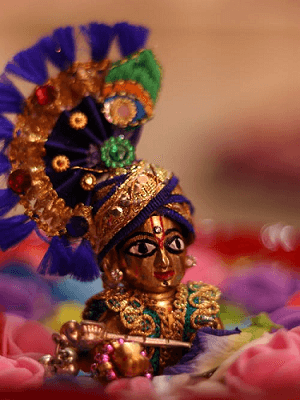
It is a significant holiday, especially in the Hindu Vaishnavism tradition. The celebrations of Janmashtami include Upavasa (fasting) , Ratri Jagran (night vigil), dance-drama reenactments of Krishna's life as described in the Bhagavad Gita (such as Krishna Lila or Rasa Lila), devotional chanting until the nightfall when Lord Krishna was born, and a feast (Mahotsav) the next day. Along with significant Vaishnava and non-sectarian populations found in Madhya Pradhesh, Bihar, Manipur, Assam, West Bengal, Odisha, and all other states of India, it is celebrated primarily in Mathura and Vrindavan. The day is particularly celebrated in Mathura and Vrindavan, the locations of Krishna's early life. Devotees fast until midnight on the day before, which is the customary time of his birth, and keep vigil. Afterward, Krishna's statue is clothed in fresh clothing, given a wash in milk and water, and offered to worship. Temples and personal shrines are adorned with flowers and leaves. After being dedicated to the deity, sweets are subsequently given to the household as prasada, or the god's leftovers, which are considered to be in his good grace. Krishna believers mark his birth by creating intricate depictions of Mathura, where he was born, the Yamuna River, through which he was brought to safety, and Gokul (ancient Vraja), the site of his infancy, with little figures of the deity, the other participants, as well as the animals and birds of the forest. In the streets, pots of milk are suspended from high poles, and men build human towers or pyramids to reach and shatter the pots?this is a reenactment of Krishna's boyhood activity with the cowherd kids, when boys stole the curds put out of sight and reach by their mothers. Group singing and dance are also performed throughout the festival. 6. OnamOne of the well-known Indian holidays is called Onam, and it is celebrated throughout the country's southern Indian states. The people of Kerala, in particular, consider Onam to be the return of the legendary Demon King "Mahabali," hence it is a significant festival for them. In Kerala, the harvest season is marked by an extended 10-day celebration of Onam. In Kerala, God's Own Country, Onam is essentially a weeklong carnival celebration! Due to the numerous performances, sumptuous feasts, boat races, processions, and other events taking place during the festival, everyone in Kerala comes together. It is a memorable experience to travel to Kerala during Onam. 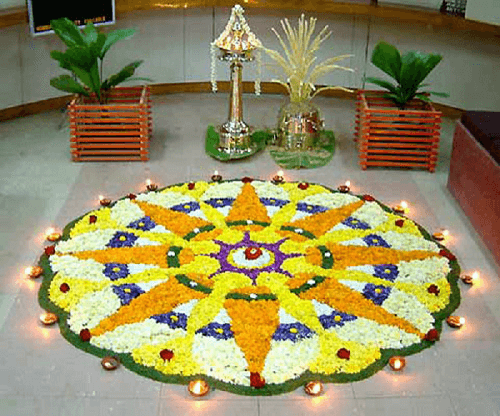
The festival features street carnivals, ethnic dances including the "Tiger Dance" and "Phulikali," folk music, and spectacular fireworks. The people make "Phokalam" (a flower-filled Rangoli) and exquisitely adorn their homes for Onam. A traditional nine-course feast is cooked and presented to friends and relatives. This Hindu festival is connected to a mythical tale. According to legend, Mahabali, an ancient monarch of Kerala, worshiped Lord Vishnu. In addition to the gods, he also subdued the entire universe. He then made the decision to conduct a large Yagya. Lord Vishnu appeared as the dwarf Vamana to test Mahabali's devotion. Vamana requested three steps of land, and Mahabali complied. As soon as Mahabali gave his consent, Vamana became a massive shape, covering the earth in one step, heaven in another, and the third step being King Mahabali's head. As a reward for Mahabali's dedication, Lord Vishnu granted him the gift that he might visit his home country once a year after his death. 7. Ganesh ChaturthiThe Hindu festival known as Ganesh Chaturthi, also known as Vinayak Chaturthi or Ganeshotsav, celebrates the birth of the god Ganesha. The cherished elephant-headed deity who is adored for his capacity to vanquish difficulties is considered to have the most strength on this day, according to Hindus. Beautiful handmade statues of the Lord Ganesha are placed on this day in both private residences and public spaces. 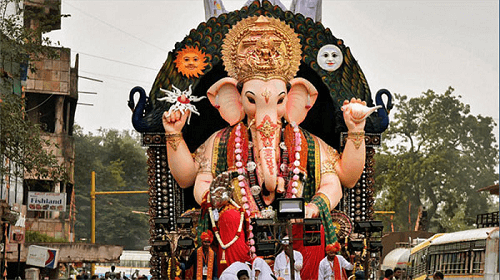
A 16-step ceremony called "Shodashopachara Puja" is done after Prana Pratishtha, which calls for the deity's power to be imbued into the statue. When Lord Ganesh is supposed to have been born, the ceremony should be carried out at a fortunate moment around midday (Madhyahna). This visarjan immersion, which occurs in a neighboring river or body of water on Anant Chaturdashi, is customary. Every year, almost 150,000 sculptures are submerged in water alone in Mumbai. Following then, it is said that Ganesha returns to his heavenly dwelling once the clay statue disintegrates. Tradition dictates that on particular occasions like Ganesh Chaturthi, one should avoid looking at the moon. In Hindu legend, if someone views the moon, they will be plagued with theft allegations and social disgrace unless they recite a certain mantra. Evidently, this resulted from Lord Krishna being wrongfully charged with stealing a priceless diamond. When Ganesh Chaturthi falls on Bhadrapad Shukla Chaturthi, Sage Narada claimed that Krishna must have seen the moon and was thus afflicted. Additionally, from that point forward, a similar curse would be placed upon anybody who viewed the moon. Ganesh Chaturthi had first been celebrated in Pune in 1893 by Bal Gangadhar Tilak, however it is uncertain when or where this initially occurred. The festival honors Lord Ganesha as the god of wisdom and intelligence in addition to being the Lord of New Beginnings and the Remover of Obstacles. Although it is observed throughout India, Maharashtra and its neighboring states enjoy the most popularity. In Nepal, Ganesh Chaturthi is often commemorated. 8. Eid al-FitrWithout including this significant celebration, the list of Indian festivals would be lacking. In India, the Muslim community warmly observes Eid al-Fitr. Muslims undertake a 30-day fast every year during the sacred month of Ramadan. Following the breaking of the fast at the conclusion of Ramadan, Eid-Ul-Fitr is observed. Eid-ul-Fitr, unquestionably one of the most significant celebrations in India, is also a significant event for Muslims worldwide. Since the festival represents the final day of celebration following a holy month of fasting, the celebrations are really spectacular. 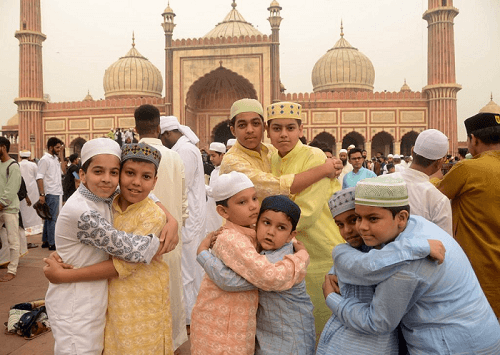
Eid al-Fitr, also known as the Festival of Sweets or the "Holiday of Breaking the Fast," is the earlier of said two official Islamic festivals (the other being Eid al-Adha). Muslims all around the world commemorate the holy occasion because it signifies the completion of the month-long Ramadan fast, which is observed from sunrise to sunset. It occurs on the beginning of Shawwal according to the Islamic calendar, which is not necessarily the same day on the Gregorian calendar because the beginning of about any lunar Hijri month vary based on when new moon is spotted by regional religious authorities. A special salat, or Islamic prayer, is said on Eid al-Fitr and consists of two rakats. This salat is typically offered in a big room or an open field. In the Hanafi school of Sunni Islam, it includes seven extra Takbirs, three at the beginning of the first rakat and three right before ruk in the second rakat. This prayer may only be recited in assembly (jamat). Other Sunni schools typically contain 12 Takbirs, divided into comparable groupings of seven and five. The first rakat of the salat in Shia Islam contains six Takbirs at the conclusion of qira'a and before ruk, and the second Rakat has five. This salat may be regarded as far, mustaabb (highly advised), or mandb, according to the local juristic view. Muslims throughout the world observe Eid al-Fitr after the salat in a variety of ways, with food (or "Eid cuisine") playing a major role. This is why the event is also known as "Sugar Feast" or "Sweet Eid." 9. Raksha BandhanRaksha Bandhan is a well-known and historically significant Hindu festival. Additionally, it is observed in other regions of the world that have been greatly affected by Hindu culture. On the final day of the Hindu lunar month of "Shraavana", which usually occurs in August, Raksha Bandhan is observed. 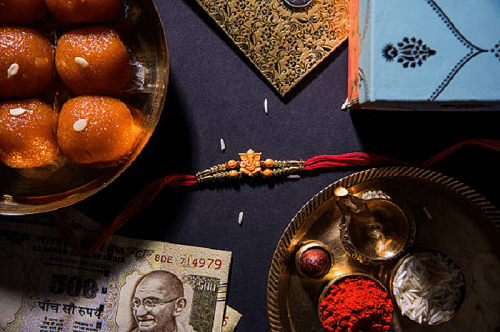
The term "Raksha Bandhan" is currently primarily used to refer to the bond of protection, obligation, and care. On this day, sisters wrap a charm or amulet referred to as the Rakhi around the wrists of their brothers. They give them a present in exchange for protecting them metaphorically, and they generally give the brothers a portion of the burden of possible care. Raksha Bandhan has a legendary past that dates back to the Mahabharata. According to legend, Krishna once injured his finger while processing sugarcane, causing it to bleed. When Rukmani, his queen, saw this, she quickly dispatched someone to retrieve the bandages. Draupadi, who was seeing everything, intervened to save him in the interimShe tore a strip of her sari off and applied it to Krishna's injured finger as a bandage. Lord Krishna then vowed to defend her if needed in return. And Lord Krishna was the one who stepped in to aid Draupadi to preserve her honor during the unceremonious disrobing incident. In accordance with another different mythology, the Lord of Death, Yama, and the Indian river Yamuna observed the Raksha Bandhan rite. The Lord of Death granted immortality to the Yamuna after she tied a rakhi to Yama, according to the legend. Additionally, he said that everyone who promises to guard their sister on this particular day also would live a long time. The bazaars are zealously adorned by the store owners in preparation for this festival. Girls start out on the hunt for the most vibrant and colorful rakhi components in the hopes of buying their brothers the greatest possible rakhi. It goes without saying that they also expect a present in exchange for their loyalty and devotion. On this blessed day of Rakhi, family gatherings are enjoyable and everyone wears new clothes. Diyas are lit in clay lamps as part of the Raksha Bandhan rites. Lighting the lamp serves primarily as a representation of the fire deity. There are supplications made for the safety of the brothers. Afterward, rakhi is tied on the brother's wrist by sisters and sisters complete the ceremony by giving some sweets to their brothers. 10. MahashivratriAmong India's most significant festivals is Mahashivratri. It is a holiday to worship Lord Shiva, a Hindu deity. Additionally, it alludes to the evening during which Lord Shiva conducts the divine dance of creation, protection, and destruction. 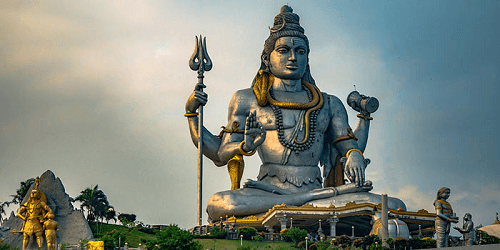
Despite the fact that there are a total of 12 Shivaratri every year, Maha Shivaratri is particularly auspicious. Shiva and Shakti, the masculine and feminine forces that keep the universe in balance, come together on this night. The devotees observe a complete day of fasting on the occasion of Mahashivratri, followed by nighttime festivities. Shiva is worshipped as a lingam, a pillar that is typically placed atop an item that represents the feminine creative energy. They together represent the merging of all of creation's organs. After the Aryan invasion into India, the usage of the lingam as an emblem of Shiva was introduced; it had previously been used in native religion. According to Shiv Puran, Lord Brahma and Vishnu once were engaged in a contentious argument about who was greater. While Vishnu praised himself as the creator, Brahma praised himself as the greatest. While this was going on, Lord Shiva saw that this disagreement may be damaging to the universe, so he appeared as a beam of fire or light to bring about calm. He then gave the responsibility of locating the start and finish of the light to Vishnu and Brahma. As a boar, Vishnu delved into the ground, whereas Brahma assumed the shape of a swan, soared skyward, and thereby accepted the challenge. After a long but fruitless search, Brahma persuaded flower Ketaki to make a fake proclamation in his favor and declare him the victor. On the other hand, Lord Shiva was enraged towards Brahma for lying since he knew that no one could ever find the light's beginning or finish. Although Brahma sought to mislead, he was punished even though Lord Vishnu acknowledged defeat. Therefore, the Maha Shivratri fast serves as a reminder that arrogance, conceit, and deceit will only result in one's demise. So, to celebrate life's core truths and to honor Mahadev, Lord Shiva, followers observe the vrat (fasting). ConclusionIndia, a country with a diverse culture, hosts several festivals. They are all so unique in their essences that to experience them all would be like experiencing a hundred lives in one. But because these festivals enhance India's beauty, be sure to attend at least the above 10 notable ones so you may remember their names in more than just your calendar but also in your memory. The lives of those who reside in India are extremely deeply entwined with these celebrations. These festivals are highly valued by many communities in India, and during these significant days, several customs and rituals are carried out.
Next TopicTop 10 Investors In India
|
 For Videos Join Our Youtube Channel: Join Now
For Videos Join Our Youtube Channel: Join Now
Feedback
- Send your Feedback to [email protected]
Help Others, Please Share









